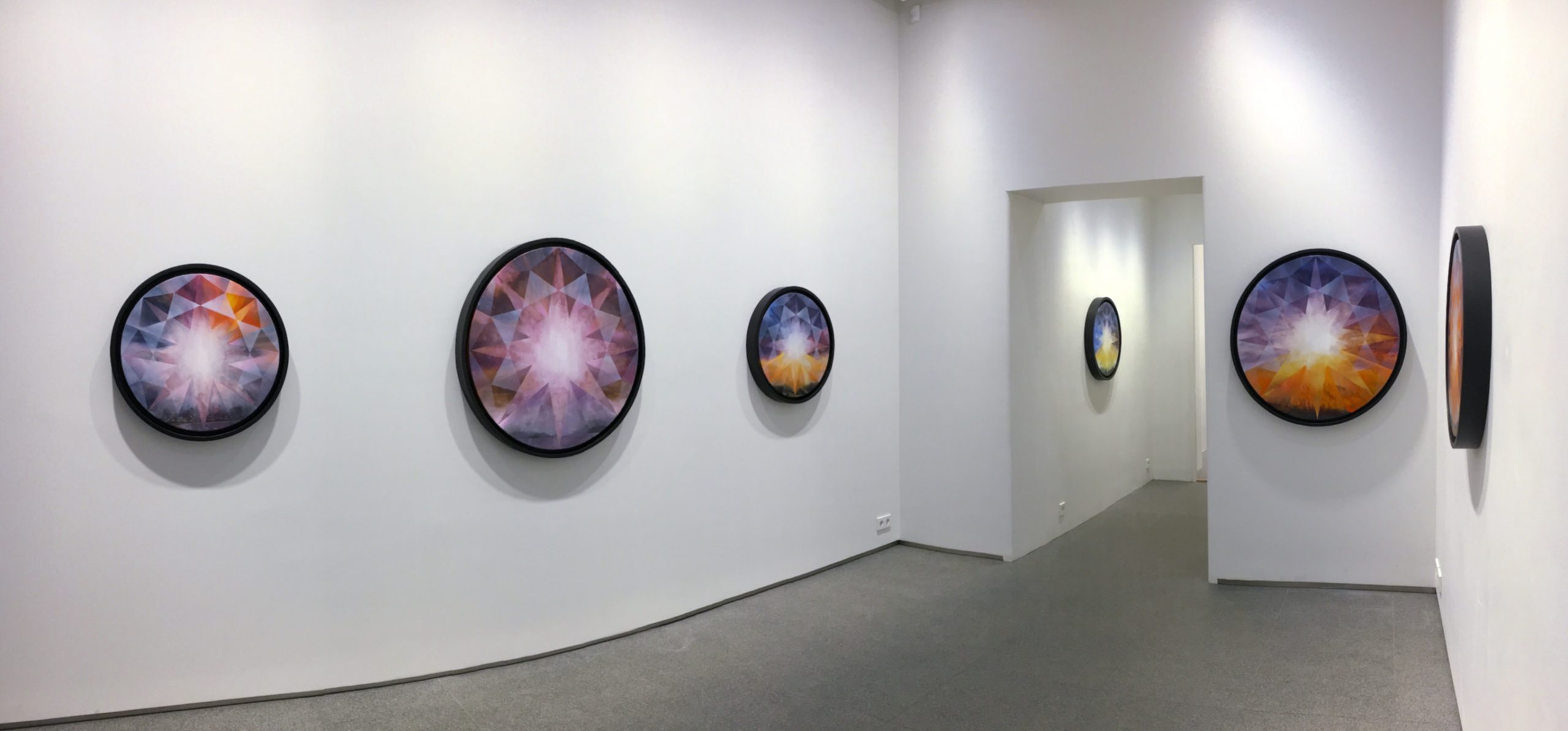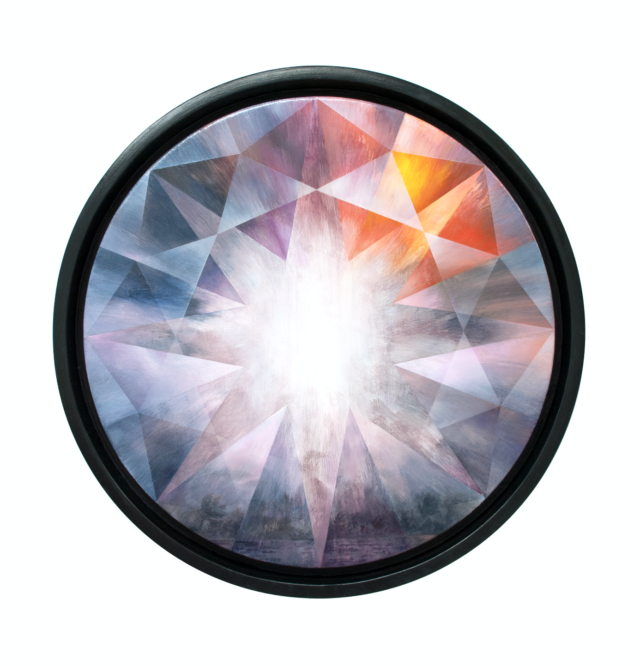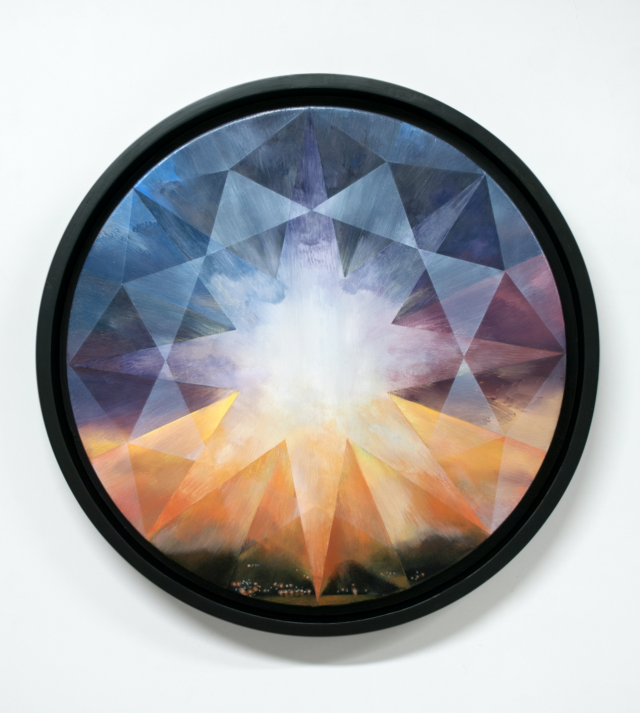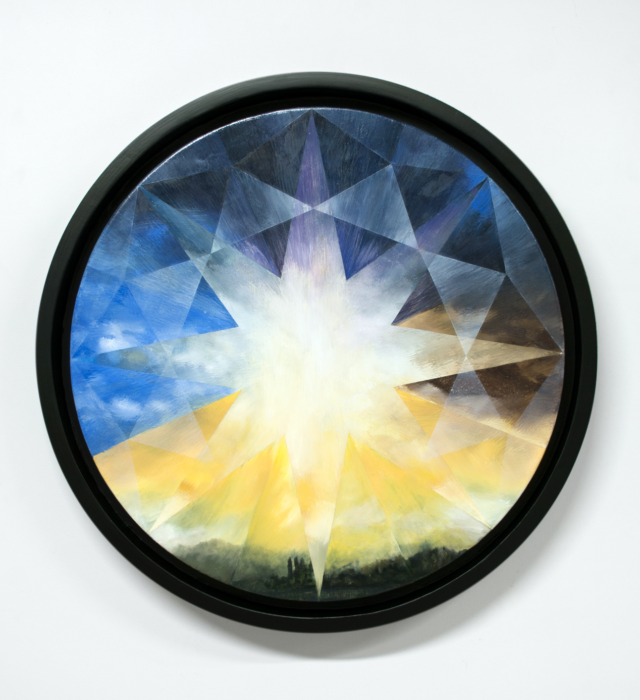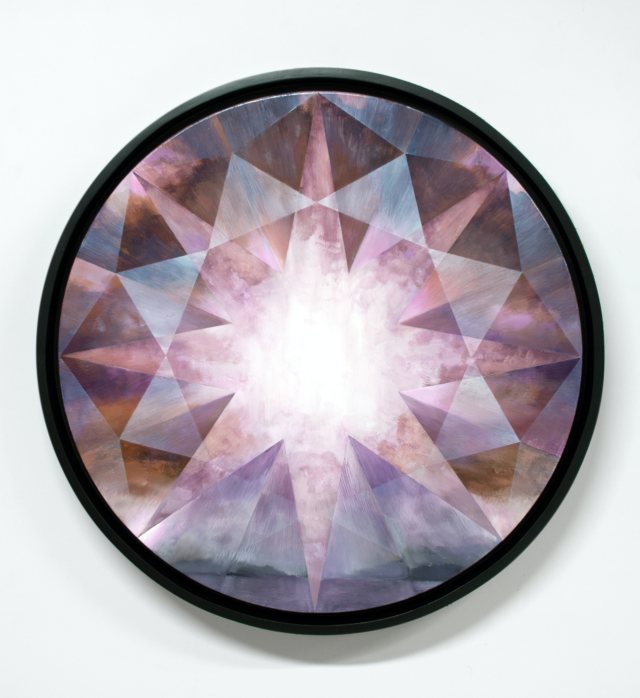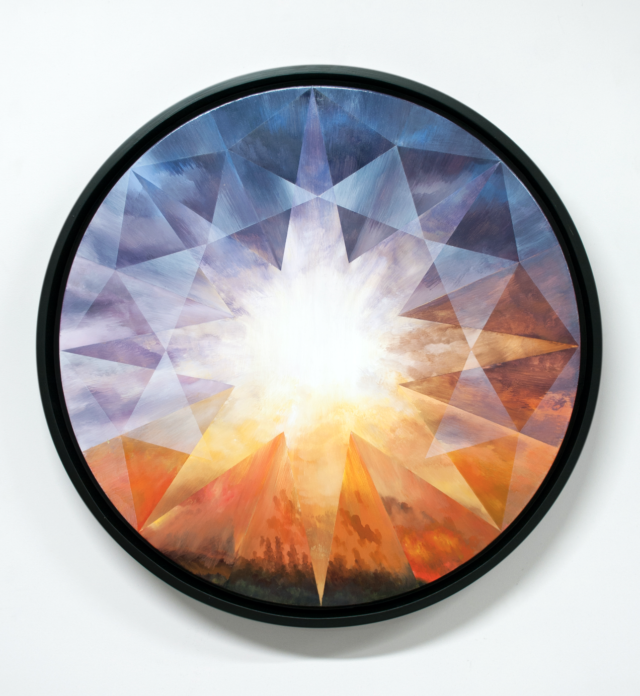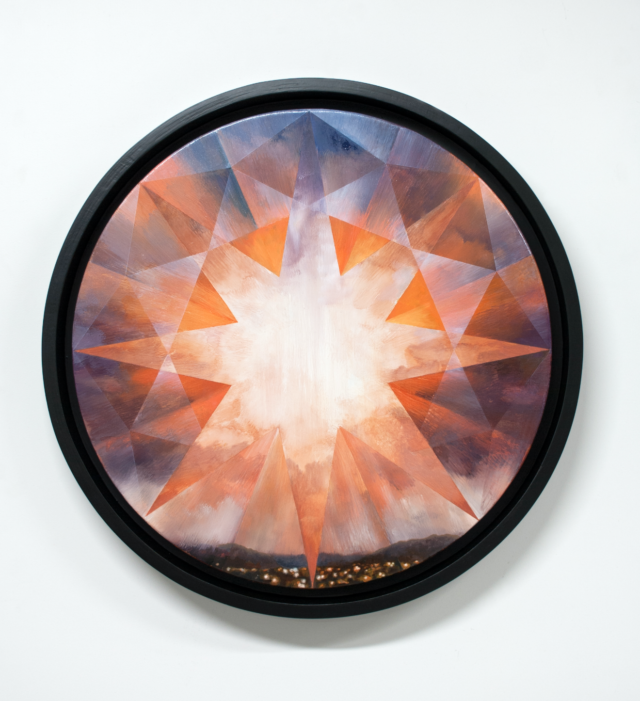
Anomalies (Tropical cyclone), 2019 / oil on canvas / 60 cm (d) 
Anomalies (Gale), 2019 / oil on canvas / 60 cm (d) 
Anomalies (Thunderstorm), 2019 / oil on canvas / 60 cm (d) 
Anomalies (Typhoon), 2019 / oil on canvas / 90 cm (d) 
Anomalies (Firestorm), 2019 / oil on canvas / 90 cm (d) 
Anomalies (Derecho), 2019 / oil on canvas / 60 cm (d)
Zetterberg Gallery is pleased to present Joonas Kota’s third solo show at the gallery with the exhibition Anomalies. With painting as his main medium, Joonas Kota (b. 1976) is distinguished for his meticulous work and attention to detail. Kota’s works, all borderline between abstract and figurative, often creates parallel realities and drifts between the fragility of the momentary and timelessness. Kota graduated from the Academy of Fine Arts in Helsinki in 2003 and is represented in both private and public collections, including KiasmaMuseum of Contemporary Art, Helsinki Art Museum – HAM and E.W. Ponkala Foundation’s collection. The artist lives and works in Helsinki.
Always a Storm Away // Joonas Kota
Text by Aura Seikkula
As a focal, metaphysical idea of human knowledge, transcendence implies a new, third meaning. The actual possibility of knowing, and retroactively knowing if one knew. Jean-Paul Sartre’s positioning gains meaning in an object-oriented world. In Being and Nothingness (1943/1956) Sartre states “Consciousness is a being such that in its being, its being is in question insofar as this being implies a being other than itself.” This itself, the consideration of its being, has brought meaning to Joonas Kota’s artistic practice.
Kota’s oeuvre revolves around three elements: the symbolic reality, the reality in itself and the transcendental. Here, as for Sartre, the transcendental third element is the actual meaning creating agency. In his earlier works, Kota proposed how an abstracted forest turns into a virtual scape, how a diamond reflects fractions of the world around us and how an Emoji icon has gained symbolic meaning even outside its original context. Interestingly, with these elements, Kota pays tribute to the meaning of motifs in painting, by carefully elaborating on each for each series.
Kota’s Transcendent Diamonds series is such a three-tier consideration of the invaluable jewel. In his latest exhibition series, Kota continues to develop his fascination for this symmetric structure and in its seemingly metaphoric meaning, he defines the actual objective phenomena of the natural world. Fascination with this ultimate natural item is intelligible. A diamond is immune to any impurity due to the arrangement of atoms that are extremely rigid. It is also a semiconductor that displays the highest known thermal conductivity and electron saturation velocity of all earthly materials. Regardless of these facts, the question keeps being directed to human time. Can something be eternal in the world we have created temporal? Kota’s answer is transcendental.
The continuum of our efforts is fragmented. The continuum of our efforts gain an entity only when considered retroactively. So, it is in this process Kota partakes in the continuum of landscape painting by bringing forth one of the most beloved motifs, the storm. Once hated by its contemporaries the Turnerian stormy sea is a meaningful reference, maybe even more so in the era of the climate crisis. For Turner, the sea always set the stage for a tragedy. It was threatening, depicting Nature’s venom in the loss of man’s nullity.
Keeping in mind with Turnerian understanding, each of Kota’s diamonds entails a storm. The meticulously shaped structures have an enchanting draw. The framed, round shape becomes a telescope for terrestrial observation. Here again, Kota’s transcendental consideration gains depth as he acknowledges the overwhelming objectivity of nature. By layering natural phenomenon with scenery and simultaneously arranging our vision with formed regularities of a cubic crystal system, the diamond, Kota proposes a stance for all life forms.
